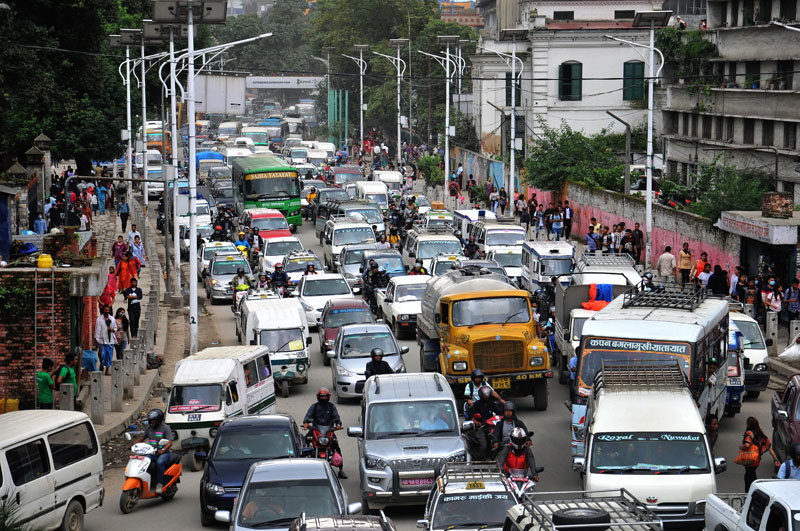Traffic chaos becomes more difficult to manage
Kathmandu, March 20
Traffic management in the Valley has become knottier every passing year due to the growing population, increasing number of vehicles, limited and narrow roads and breaching of traffic rules by drivers and pedestrians alike, according to experts.
Moreover, the Metropolitan Traffic Police Division lacks the required human resources to carry out its responsibilities.
There are around 1.1 million vehicles operating in Kathmandu Valley alone, said Tok Raj Pandey, spokesman at the Department of Transport Management. According to him, around one lakh vehicles are added every year.
Although the registration of vehicles started 69 years back in Nepal, an office for traffic management was established 66 years ago.
This office was known as Ram Dal. The Central Traffic Company was set up in 1956. It only had 125 traffic policemen because the number of roads and vehicles was very limited at that time.
The modern-day version of the company, Metropolitan Traffic Police Division, has 1,346 traffic police personnel, Deputy Superintendent of Police at the Division, Binod Ghimire, said.
“The problem with traffic management is because the road expansion and construction of road infrastructure is far too little in comparison to the rate of urban growth as well as less priority given to the development of the transportation sector in the government’s policy and programme,” Ghimire said.
The police officer added that more than 2,000 traffic police personnel would be required to mobilise the traffic police in accordance with the traffic pressure in Kathmandu.
The Division currently has a total of 1,085 posts but due to the shortage of manpower, it is compelled to even assign trainee traffic police personnel.
Thapathali, Kesharmahal, Naya Baneshwar, Koteshwar, Chabahil and Kalanki cross-roads among other places in Kathmandu valley are notorious for traffic jams, especially during office time.
It is said that one has to wait for three to five minutes in traffic jams on office days on these main cross-roads.
According to division chief, Deputy Inspector General Mingmar Lama, they are working in accordance with the values of minimising traffic accidents, regulating and managing traffic with high level of discipline, reforming the traffic organisation as per the requirement of the times and increasing public participation in traffic management.
In addition to the public participation, the deputy inspector said that although the total road lengh in Kathmandu Valley at present is around 1,500 kilometres, the total length of main roads where vehicles can operate two-way is only between 400 to 500 kilometres.






